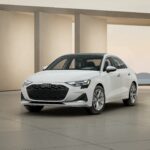Hybrid cars represent a significant advancement in automotive technology, blending the power of a traditional internal combustion engine with the efficiency of electric motors. These vehicles are designed to maximize fuel economy and reduce emissions, offering a greener alternative without compromising on driving performance. Unlike fully electric vehicles, hybrid cars do not require external charging. Instead, they utilize a smart system to recharge their batteries through regenerative braking and the engine itself. This synergy between engine and electric motor not only boosts fuel efficiency but can also enhance power output, sometimes allowing for a smaller, more efficient gasoline engine under the hood. The electric motor’s power also supports vehicle functions, lessening engine workload when idling or powering auxiliary systems. This integrated approach results in substantial fuel savings and environmental benefits.
Key Components of Hybrid Vehicle Technology
To understand how hybrid cars achieve their efficiency and performance, it’s essential to examine their core components:
Auxiliary Battery: The low-voltage auxiliary battery plays a crucial role in initiating the vehicle’s systems. It provides the initial power to start the car before the high-voltage traction battery engages, and it continues to power essential vehicle accessories.
DC/DC Converter: This converter is a vital component for managing electrical power. It steps down the high-voltage DC power from the traction battery pack to a lower voltage, which is necessary for operating the car’s accessories and for recharging the auxiliary battery.
Electric Generator: Hybrid cars are equipped with an electric generator that cleverly captures energy during deceleration. When the brakes are applied, the generator harnesses the kinetic energy from the rotating wheels and converts it into electricity, which is then fed back to the traction battery pack, a process known as regenerative braking. Some advanced systems utilize motor generators that serve a dual purpose, functioning as both a drive motor and a generator.
Electric Traction Motor: The electric traction motor is the driving force behind the hybrid system. It draws power from the traction battery pack to propel the vehicle’s wheels. Working in tandem with the internal combustion engine, or sometimes independently at lower speeds, the electric motor provides extra power for acceleration and improves overall efficiency. Again, some vehicles integrate motor generators for combined drive and regeneration functions.
Exhaust System: While hybrids utilize electric power, they still incorporate an exhaust system to manage emissions from the internal combustion engine. This system efficiently channels exhaust gases away from the vehicle. Crucially, it includes a three-way catalyst, designed to minimize harmful emissions produced by the engine.
Fuel Filler: Just like conventional gasoline cars, hybrid cars have a fuel filler point. This is where a fuel nozzle is inserted to refuel the gasoline tank, as hybrid cars still rely on gasoline for the internal combustion engine.
Fuel Tank (Gasoline): The gasoline fuel tank is a standard component, storing gasoline to power the internal combustion engine when needed. The size of the tank may sometimes be optimized in hybrids due to the electric motor sharing the propulsion load.
Internal Combustion Engine (Spark-Ignited): The internal combustion engine in a hybrid car is typically a spark-ignited engine. Fuel is injected into the intake manifold or directly into the combustion chamber, mixing with air and ignited by a spark plug. This engine works alongside the electric motor to power the vehicle, and in some cases, to recharge the traction battery.
Power Electronics Controller: This sophisticated unit acts as the brain of the electric drive system. It expertly manages the flow of electrical energy from the traction battery. The controller precisely regulates the speed and torque output of the electric traction motor, ensuring efficient and responsive power delivery.
Thermal Management System (Cooling): Maintaining optimal operating temperatures is crucial for all components. The thermal system in a hybrid car is designed to regulate the temperature of the engine, electric motor, power electronics, and battery pack. This cooling system ensures longevity and efficient performance of all these critical components.
Traction Battery Pack: The traction battery pack is the energy reservoir for the electric drive system. It stores high-voltage electricity that powers the electric traction motor. The battery’s capacity and technology directly impact the electric driving range and overall efficiency of the hybrid vehicle.
Transmission: The transmission in a hybrid car serves a similar function to that in a conventional car. It effectively transfers mechanical power from both the internal combustion engine and/or the electric traction motor to the wheels, managing power delivery for varying driving conditions and speeds.
